Every function in Haskell consumes exactly one parameter and returns a value. Functions are pure and will always return the same output for the same input. Common features include pattern matching, lazy evaluation, and typeclasses. Typeclasses define properties of types like Eq (equality) and Show (string representation). Functions can be partially applied or composed for functional programming style. Useful types include Maybe for optional values and Either for error handling. The Functor typeclass allows types to be mapped over with fmap.
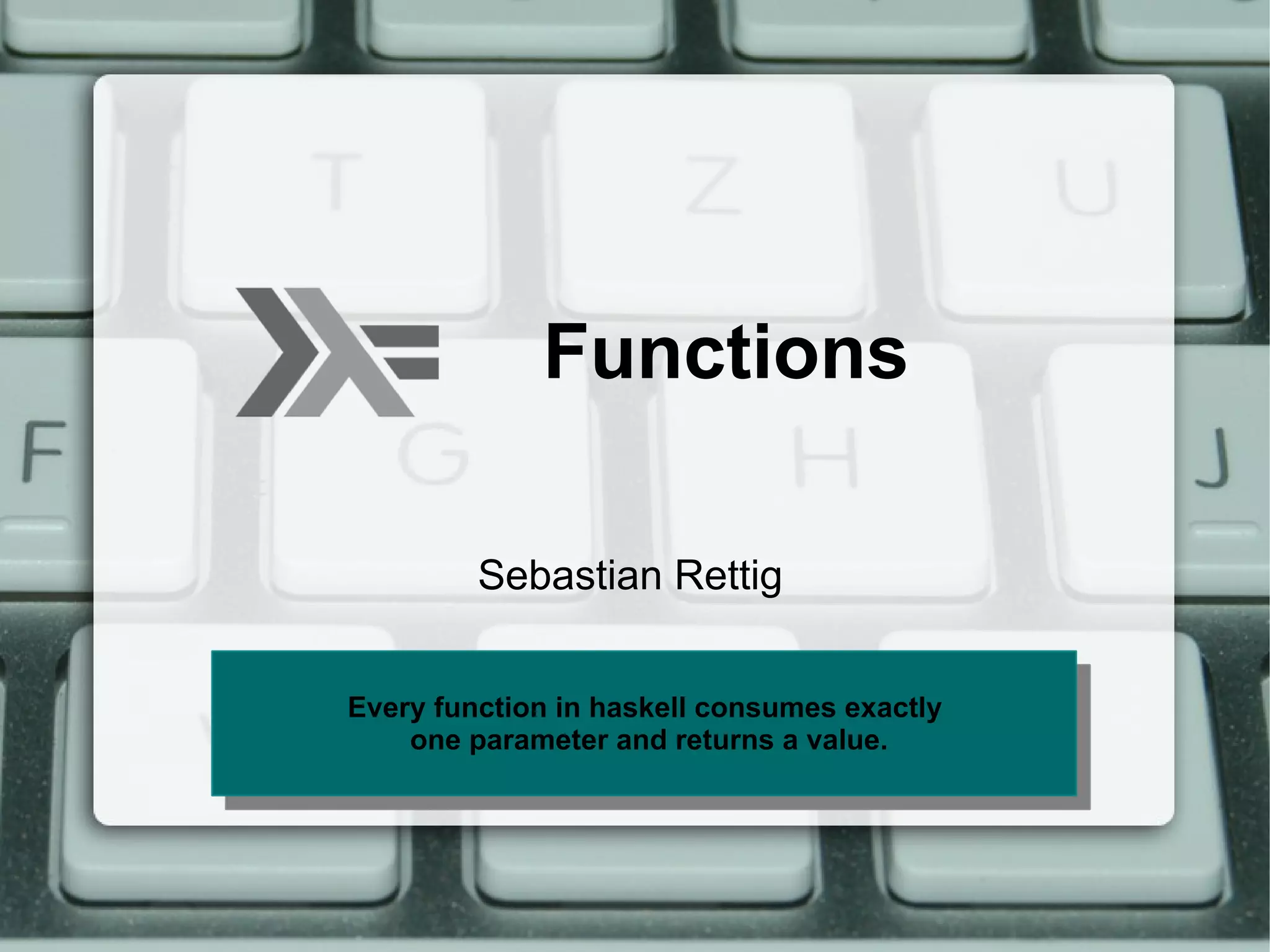
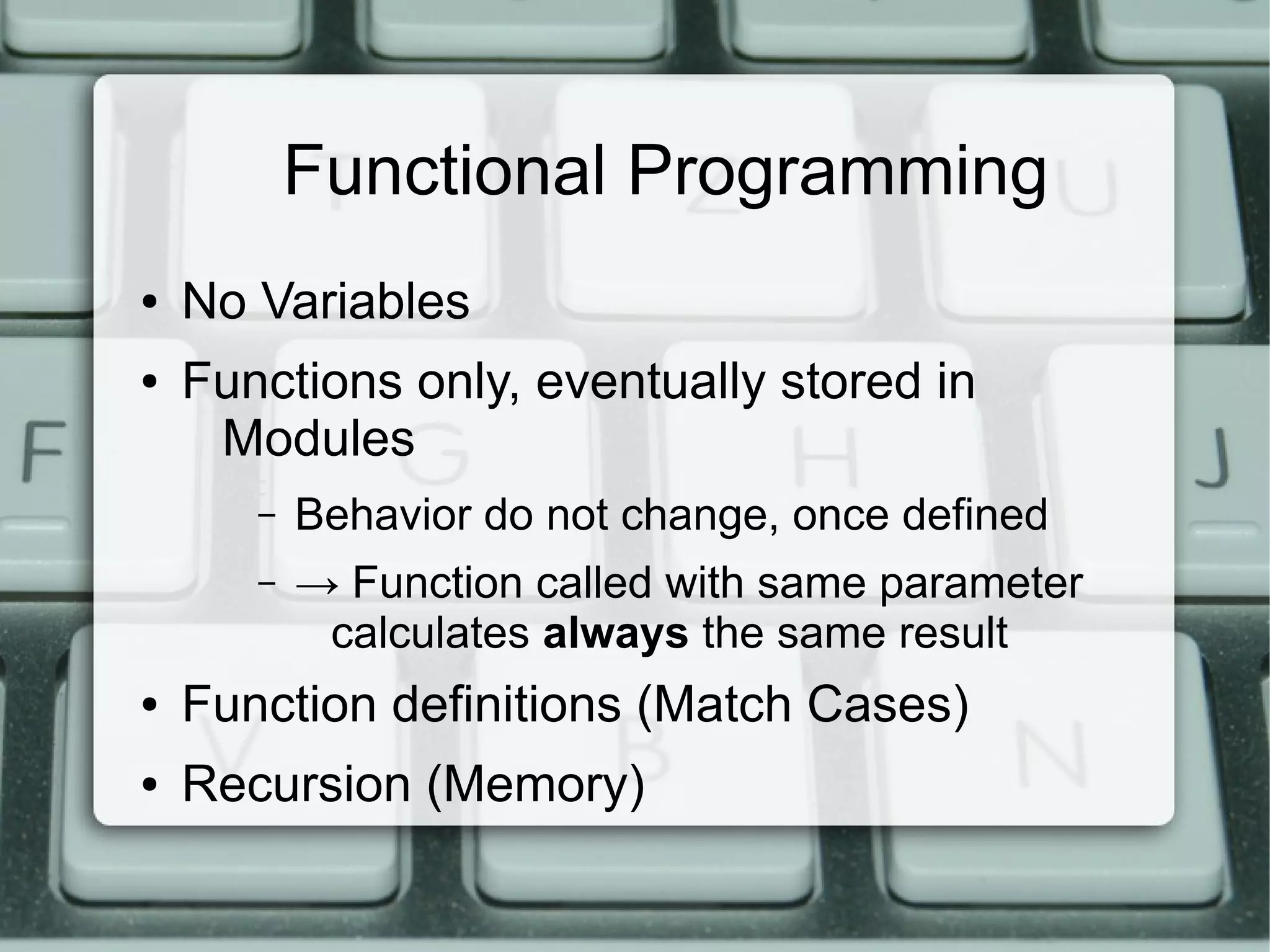
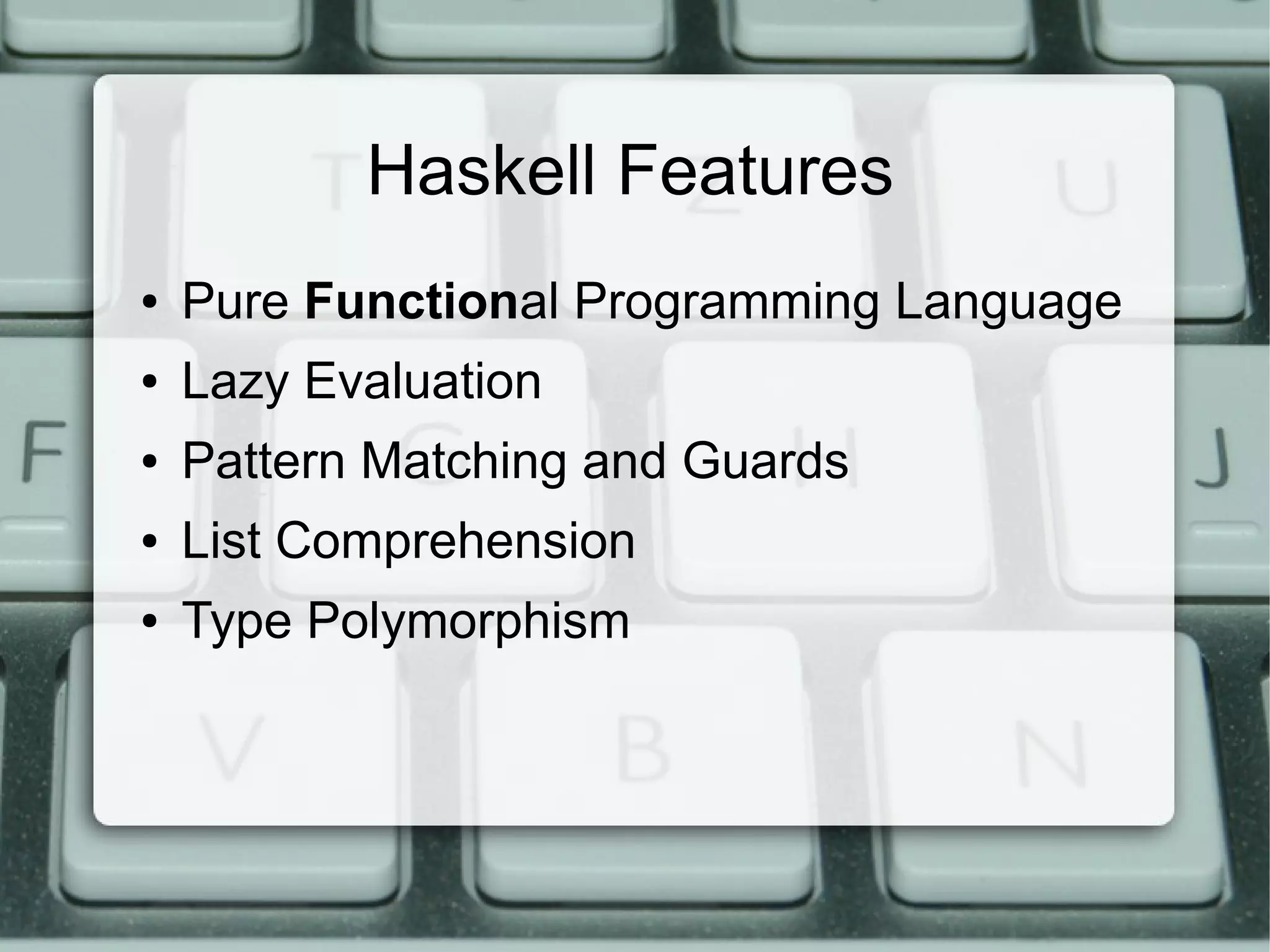
![Nice to remember (1) Typeclasses: ● define properties of the types ● like an interface – Eq can be compared – Ord can be ordered (>, <, >=, <=) (extending Eq) – Show can be shown as string – Read opposite of Show – Enum sequentially ordered types (can be enumerated and usable in List-Ranges ['a'..'e'])](https://image.slidesharecdn.com/08-haskellfunctions-130228215050-phpapp01/75/08-haskell-Functions-4-2048.jpg)
![Nice to remember (2) Typeclass-Membership: 1. derive from existing Memberships of used types data Vector2D = Vector Float Float deriving (Show, Eq) 2. implement Membership by your own instance Show Vector2D where show Vector a b = “x: ” ++ [a] ++ “ ; y: ” ++ [b]](https://image.slidesharecdn.com/08-haskellfunctions-130228215050-phpapp01/75/08-haskell-Functions-5-2048.jpg)
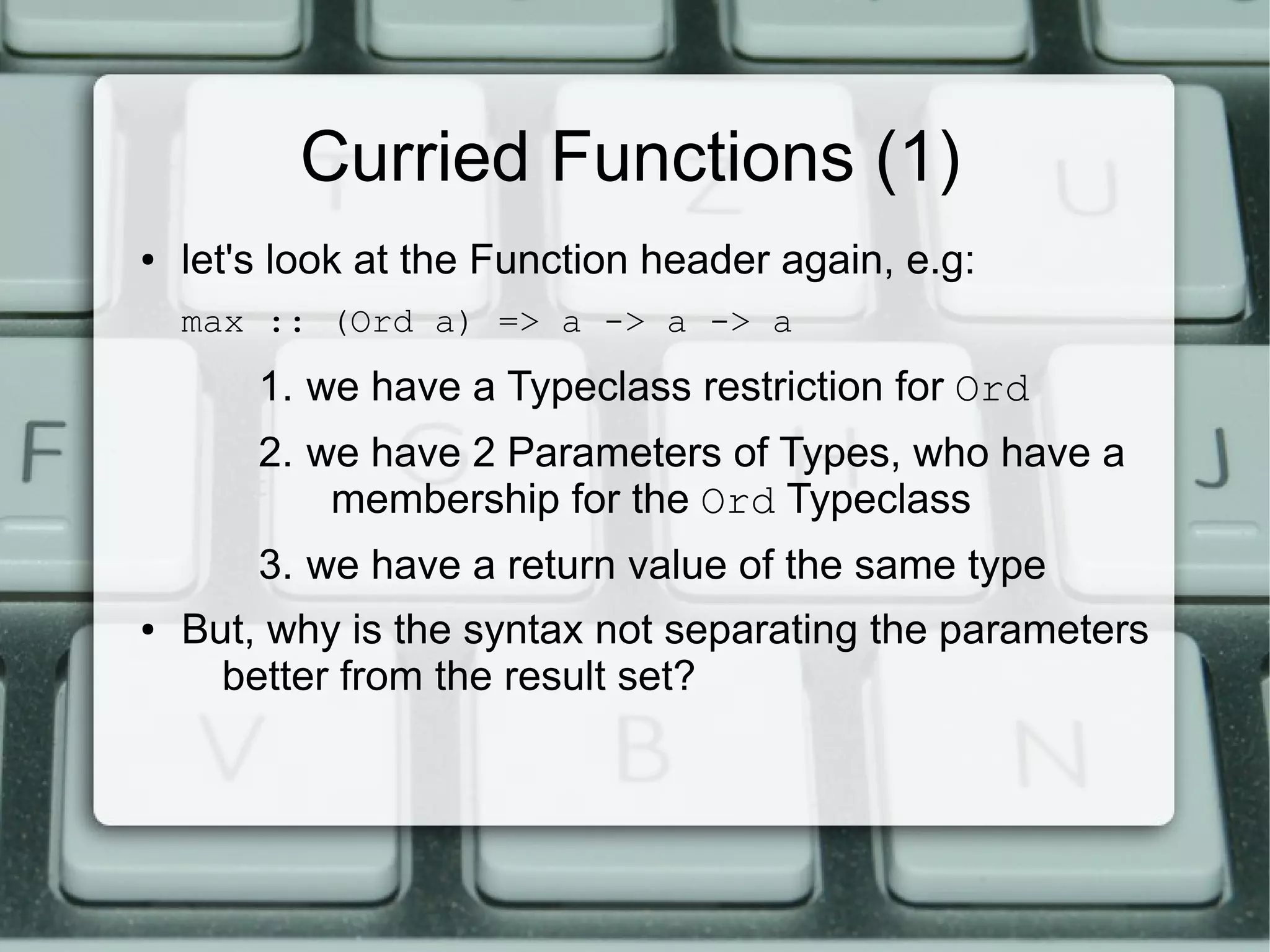
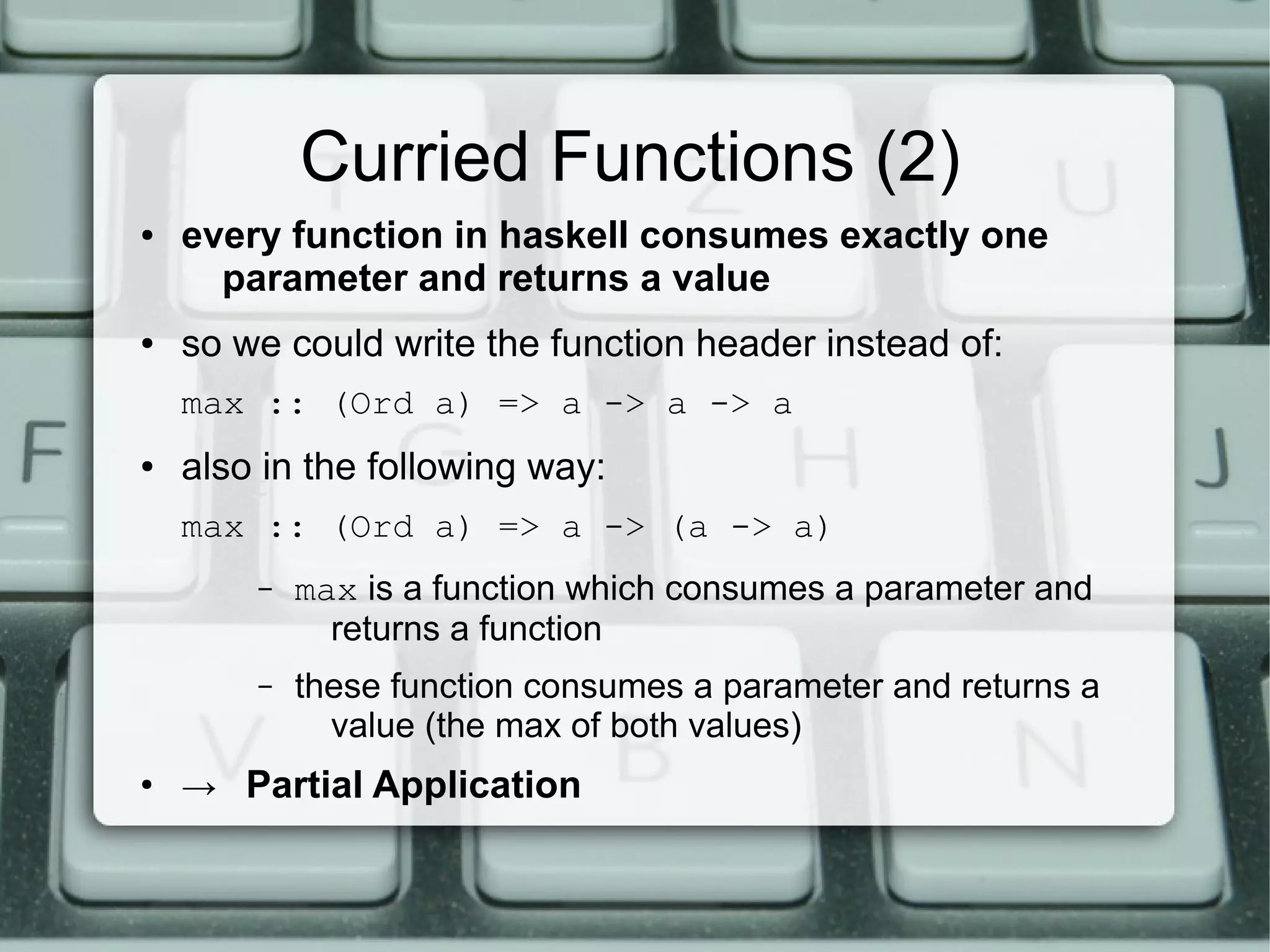
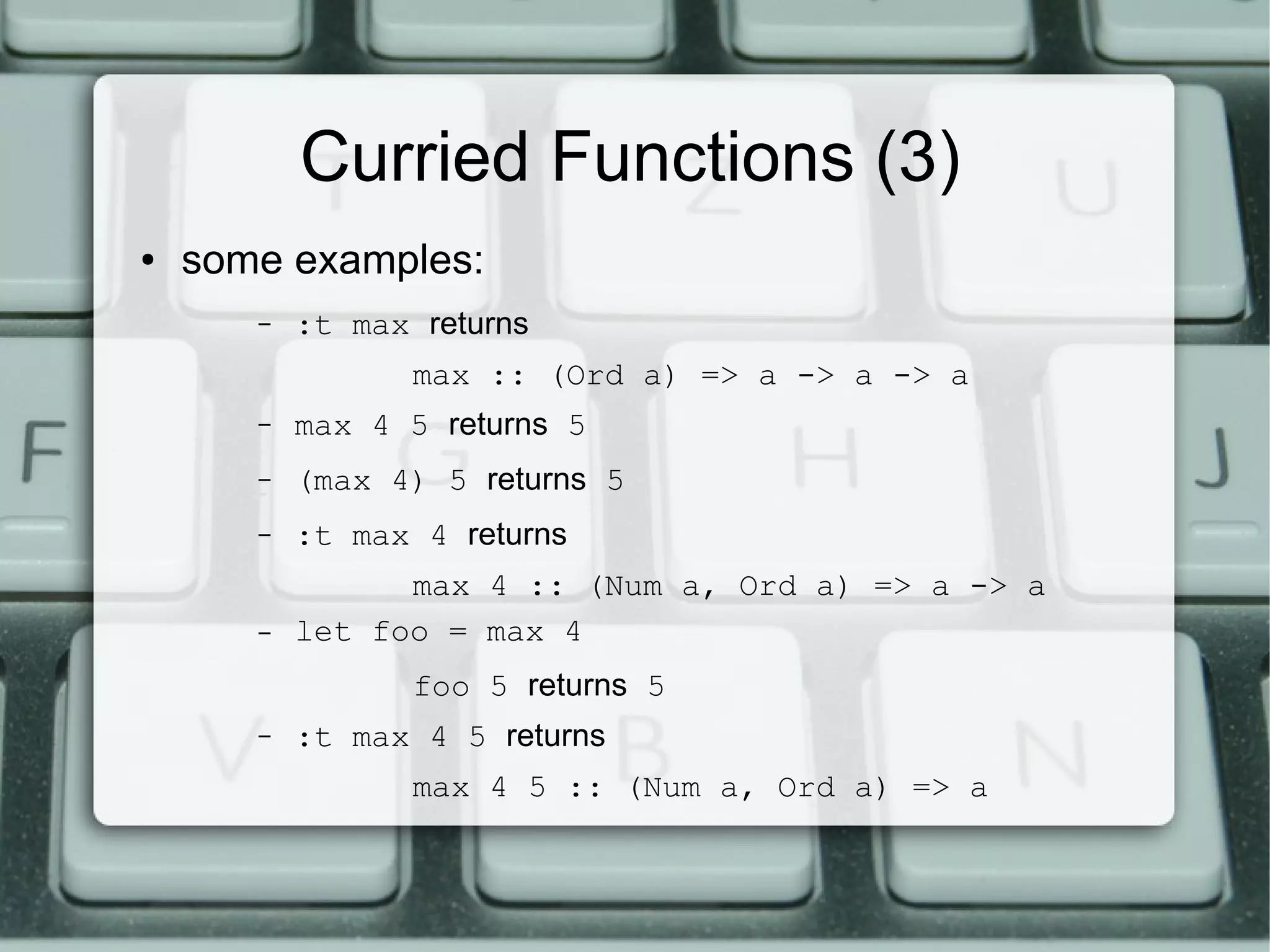
![Curried Functions (4) ● we can also partial apply infix functions (/10) 2 returns 0.2 (10/) 2 returns 5 (++ “bar”) “foo” returns “foobar” (“bar” ++) “foo” returns “barfoo” :t (`elem` ['a'..'z']) (`elem` ['a'..'z']) :: Char -> Bool :t ('a' `elem`) (`elem` ['a'..'z']) :: [Char] -> Bool :t elem elem :: Eq a => a -> [a] -> Bool](https://image.slidesharecdn.com/08-haskellfunctions-130228215050-phpapp01/75/08-haskell-Functions-9-2048.jpg)
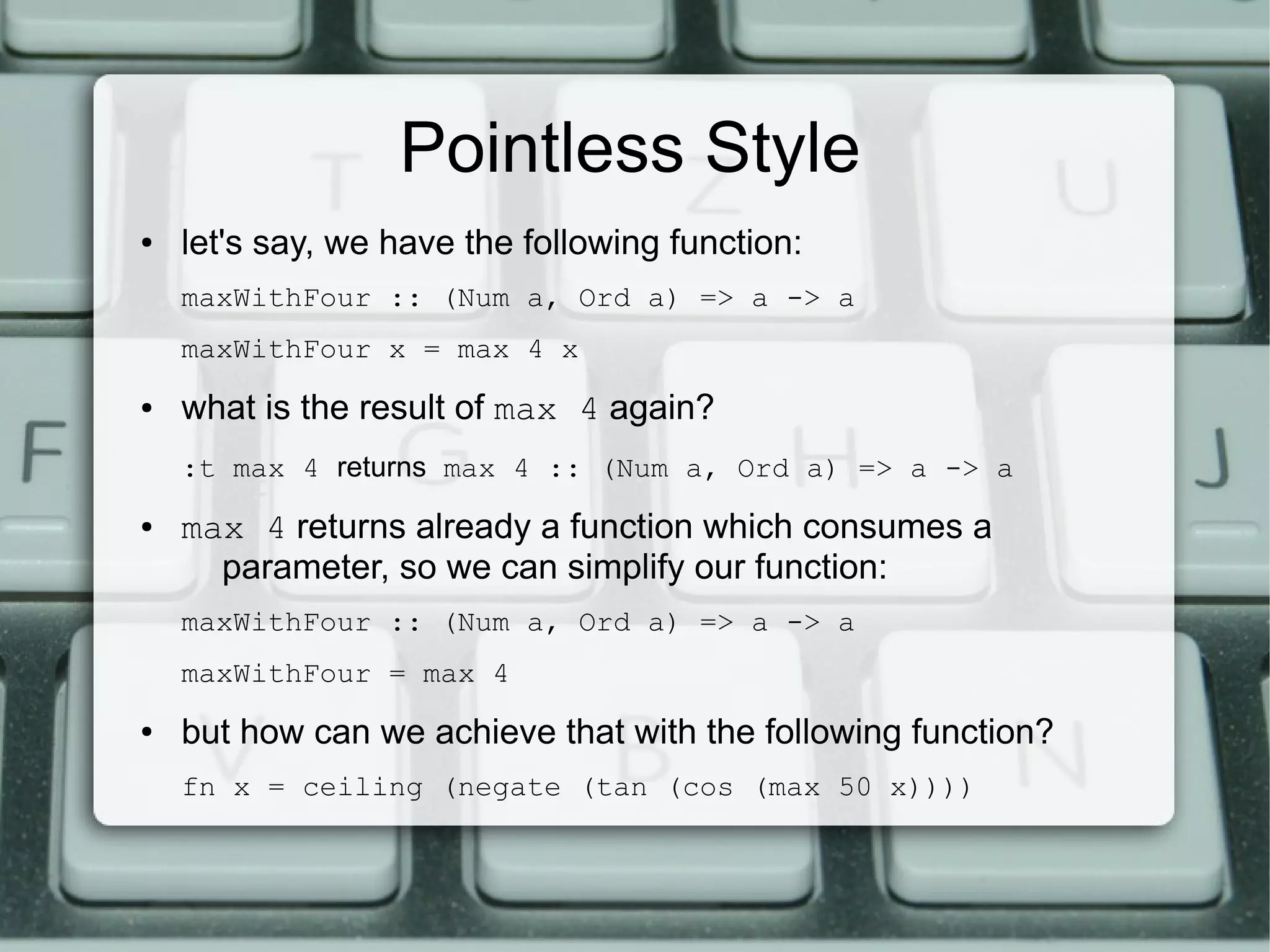
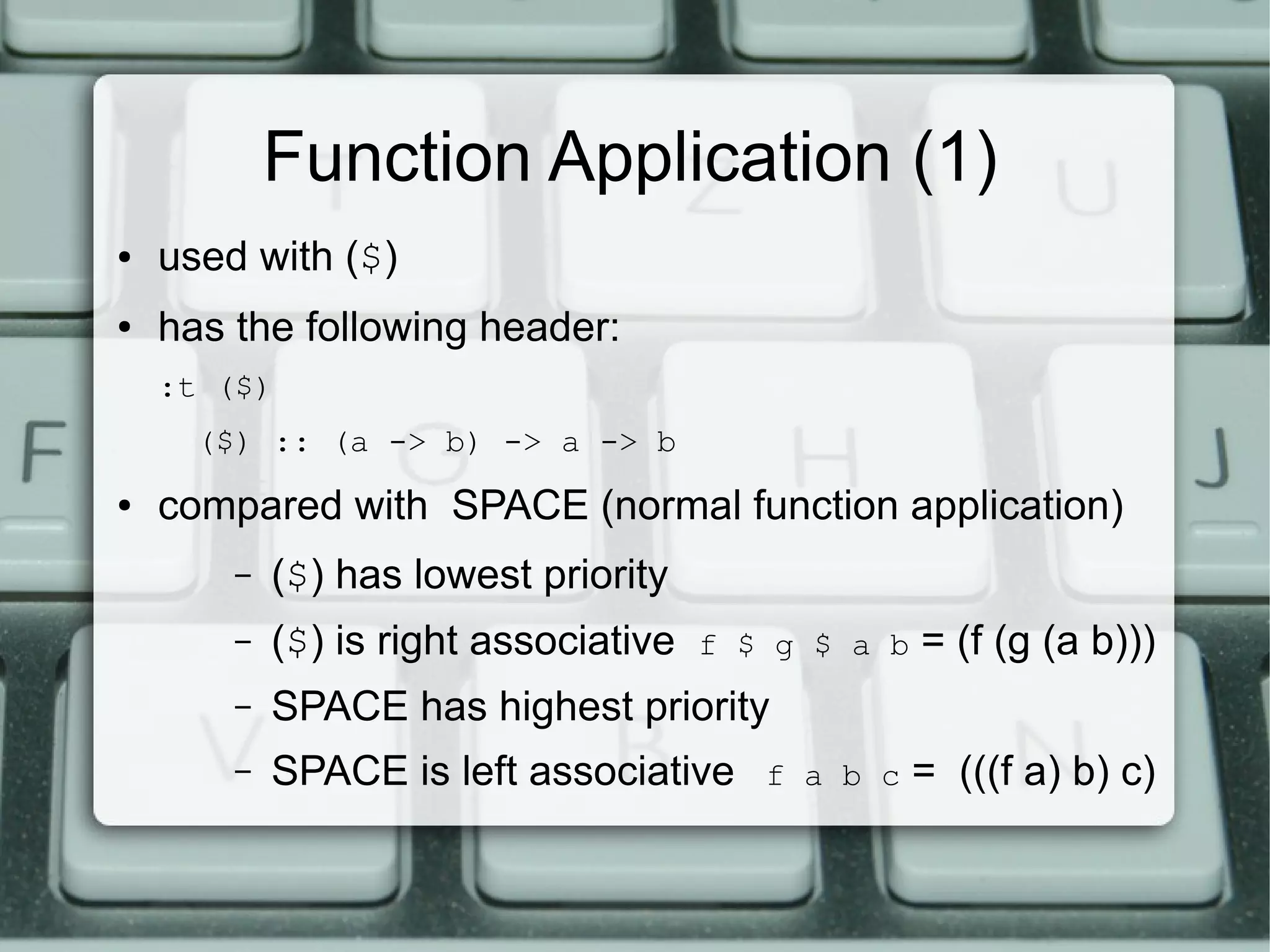
![Function Application (2) ● what can we do with ($) ? ● helps us to avoid parentheses: – instead of: sum (map sqrt [1..20]) – we can write: sum $ map sqrt [1..20] ● allows us also to wrap a value in a function: map ($ 3) [(4+), (10*), (^2), sqrt] returns [7.0,30.0,9.0,1.7320508075688772]](https://image.slidesharecdn.com/08-haskellfunctions-130228215050-phpapp01/75/08-haskell-Functions-12-2048.jpg)
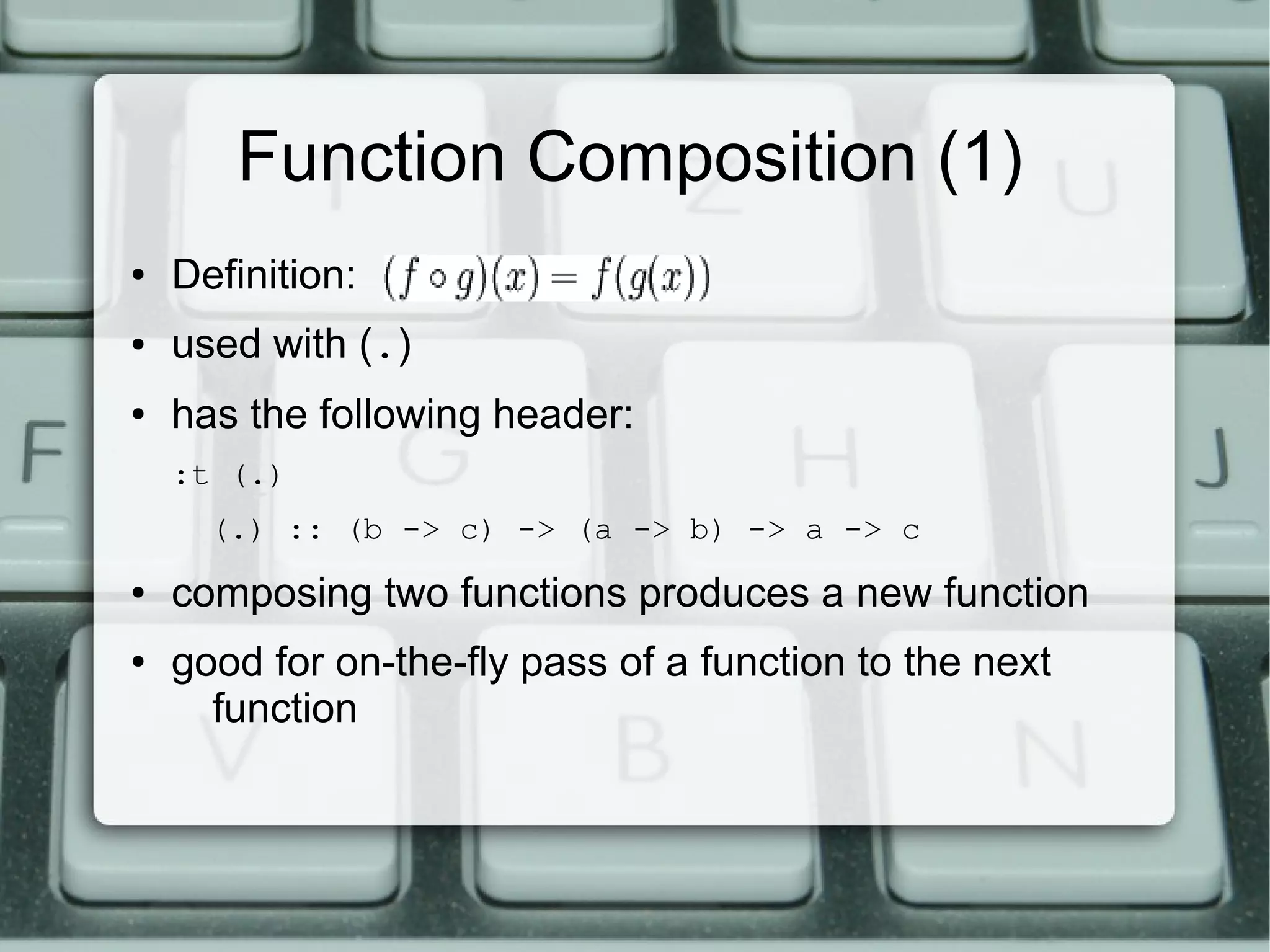
![Function Composition (2) ● what can we do with (.) ? ● helps us also to avoid parentheses ● → unwraps the parameter out of parentheses – instead of: map (xs -> negate (sum (tail xs))) [[1..5], [3..6],[1..7]] – we can write: map (negate . sum . tail) [[1..5],[3..6], [1..7]]](https://image.slidesharecdn.com/08-haskellfunctions-130228215050-phpapp01/75/08-haskell-Functions-14-2048.jpg)
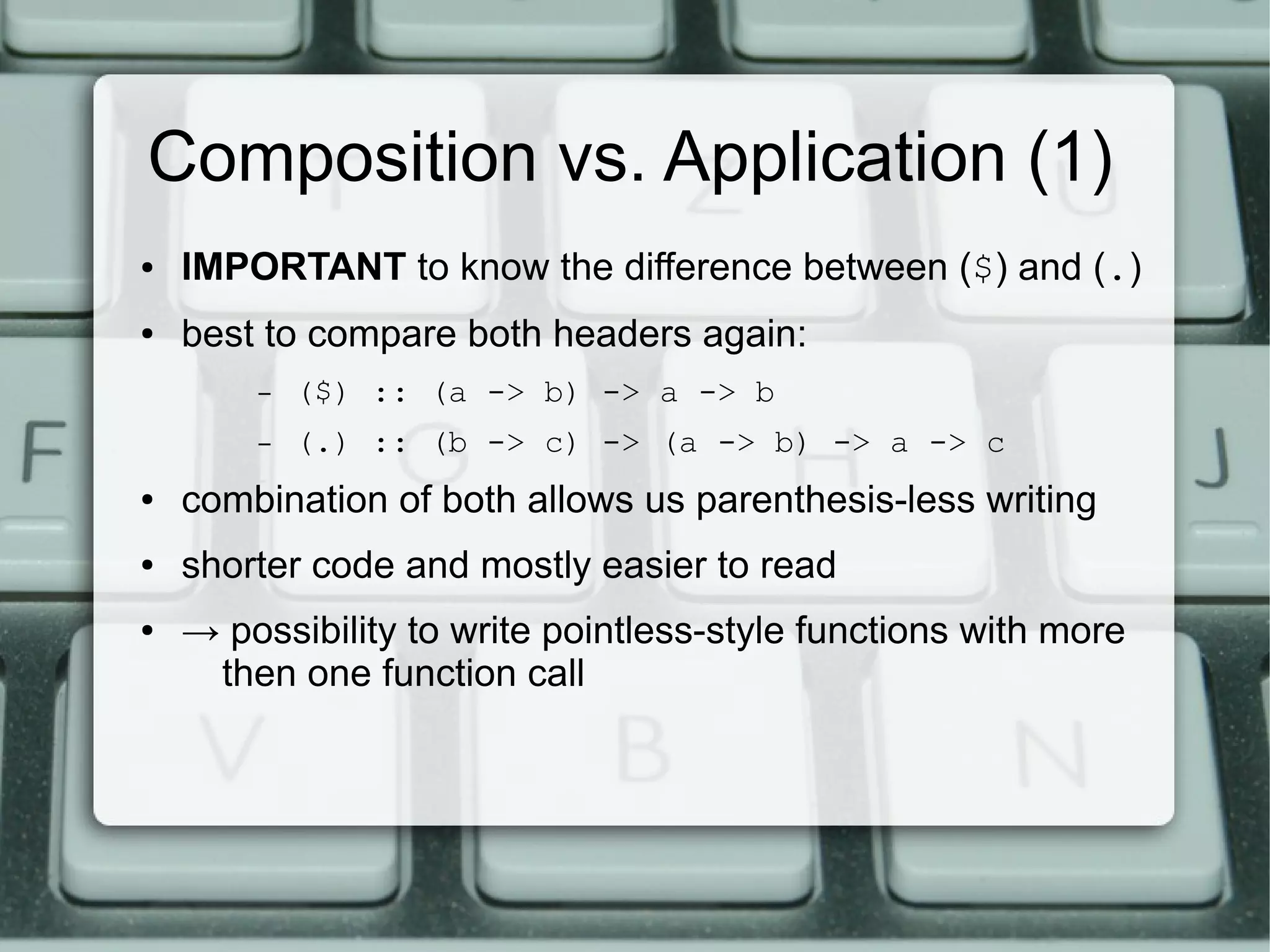
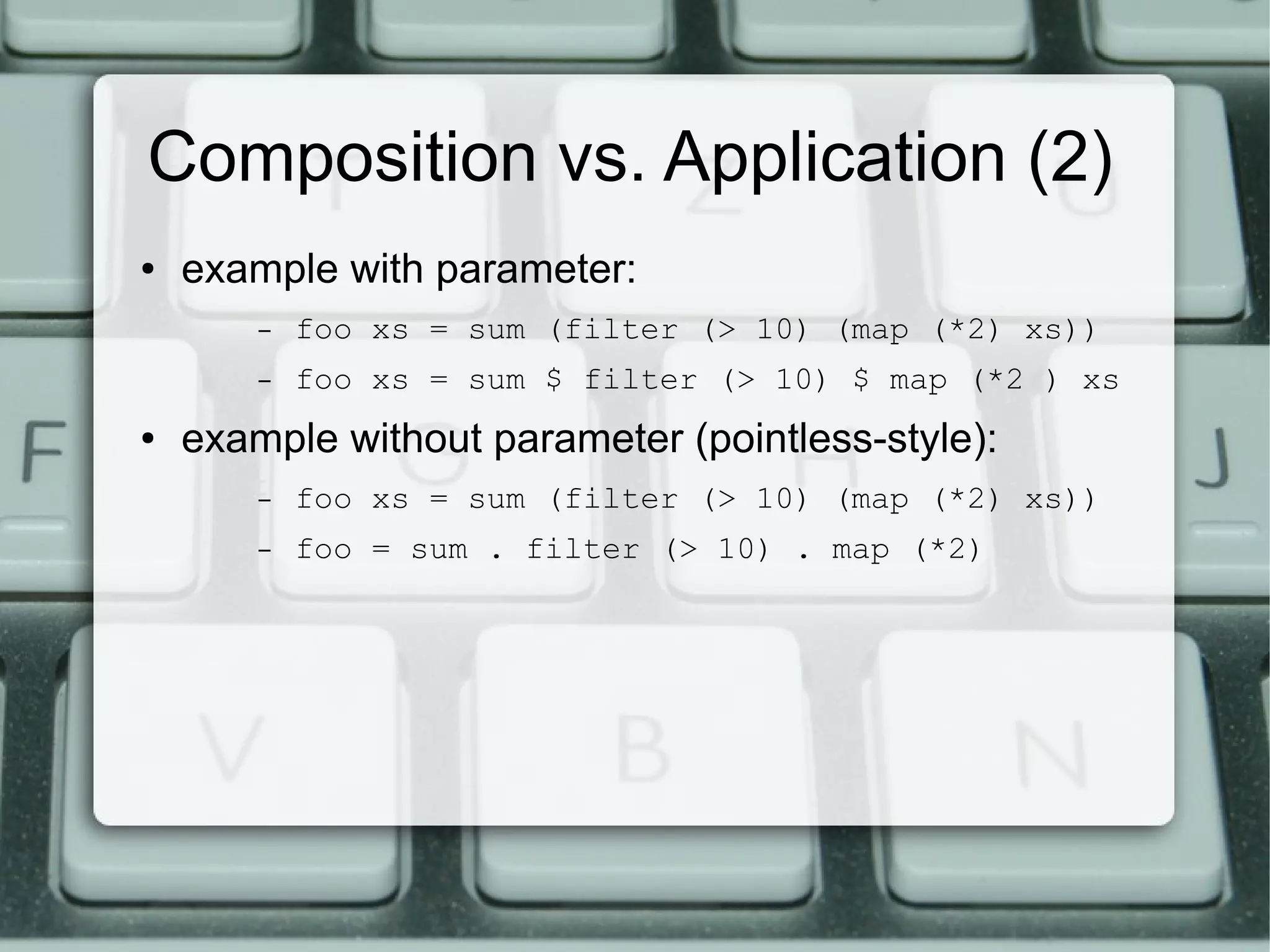
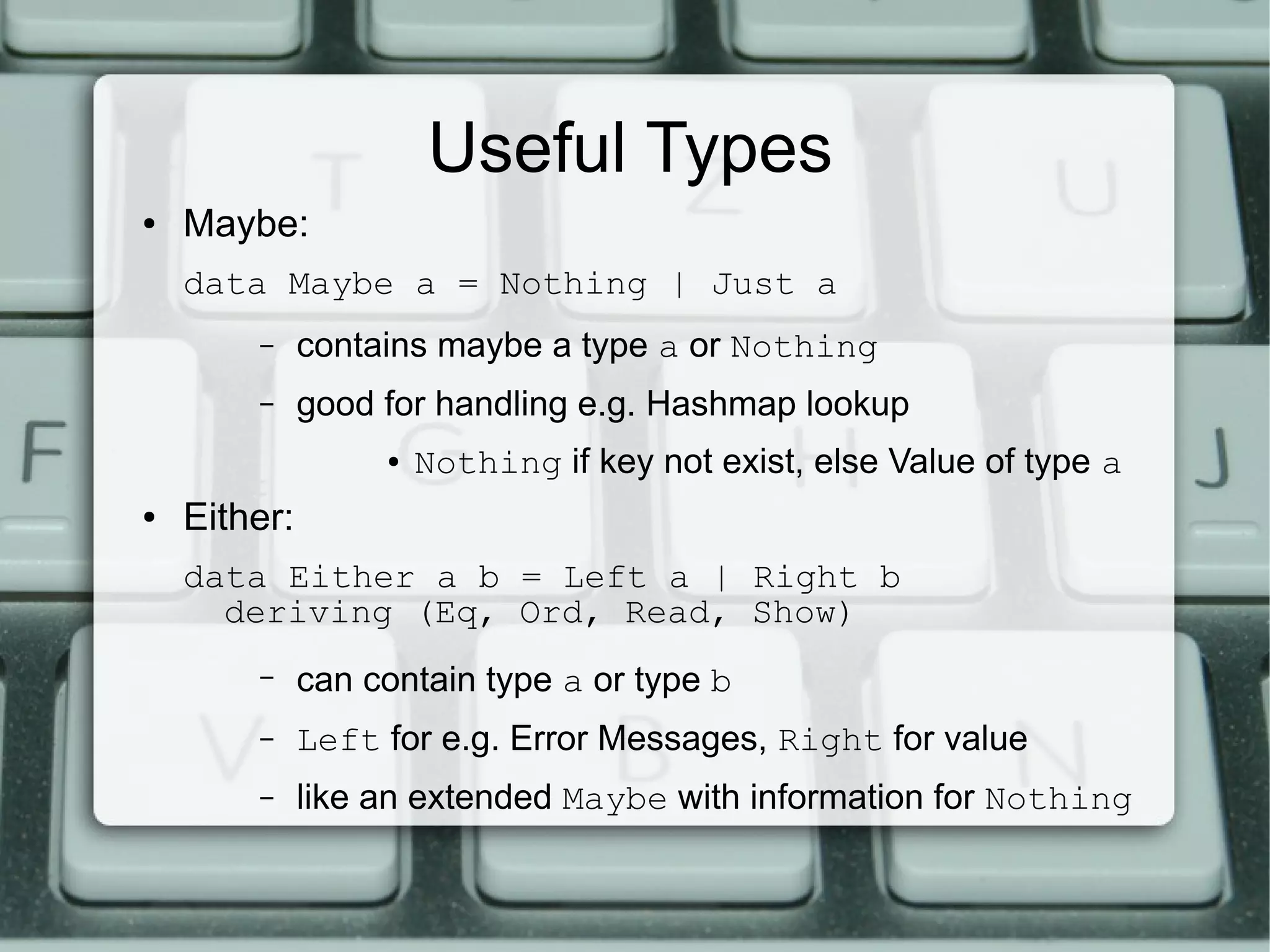
![Functor Typeclass (1) class Functor f where fmap :: (a -> b) -> f a -> f b ● for things that can be mapped over ● !!! Functor needs Types with 1 Typeparameter !!! ● fmap gets a function and a type and maps the function over the type variable ● Instance for List: – Remember: List has 1 Typeparameter [a], but is just Syntactic Sugar for ([] a) instance Functor [] where fmap = map – Example: fmap (*2) [2,3,4] returns [4,6,8]](https://image.slidesharecdn.com/08-haskellfunctions-130228215050-phpapp01/75/08-haskell-Functions-18-2048.jpg)
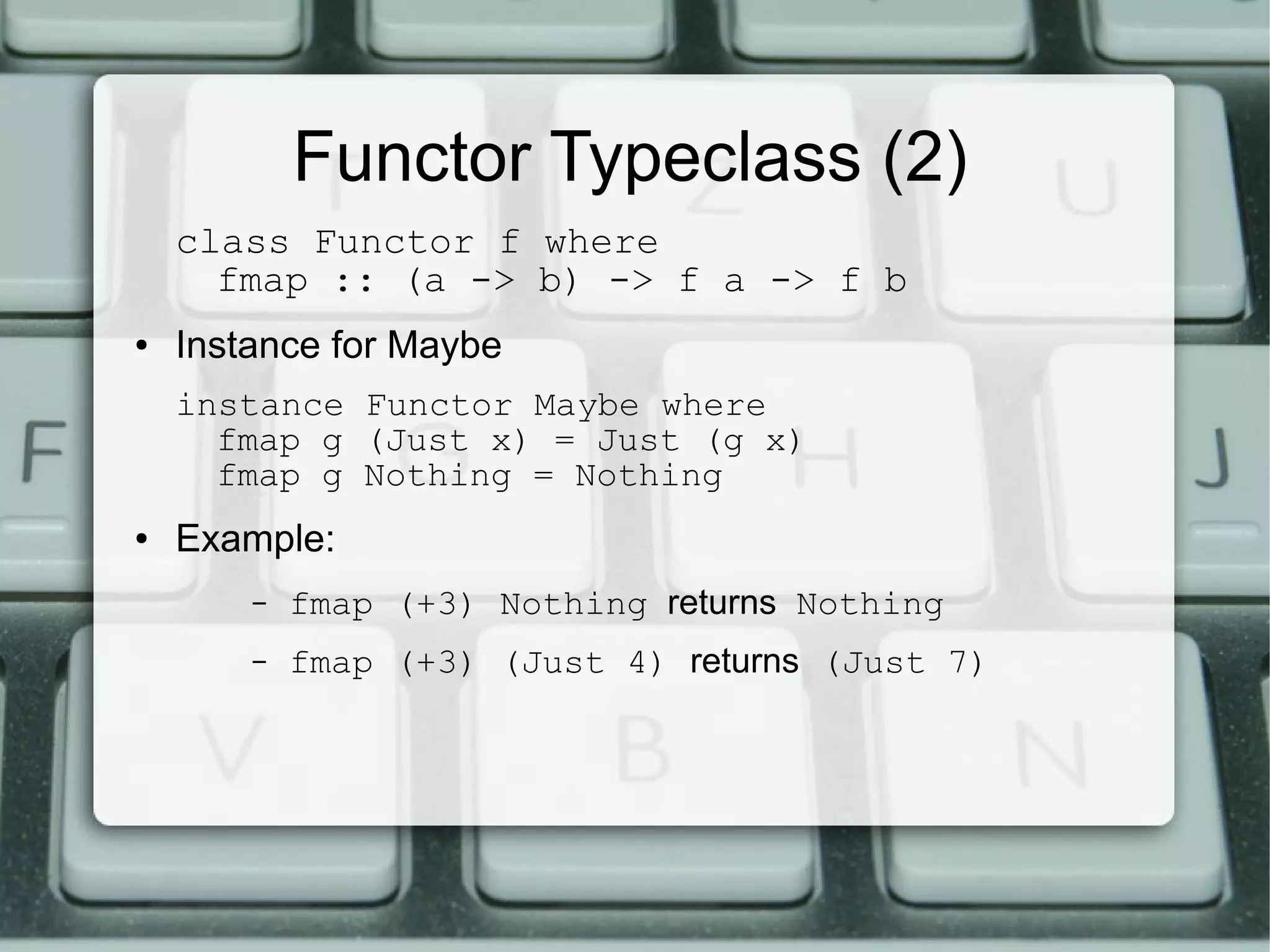
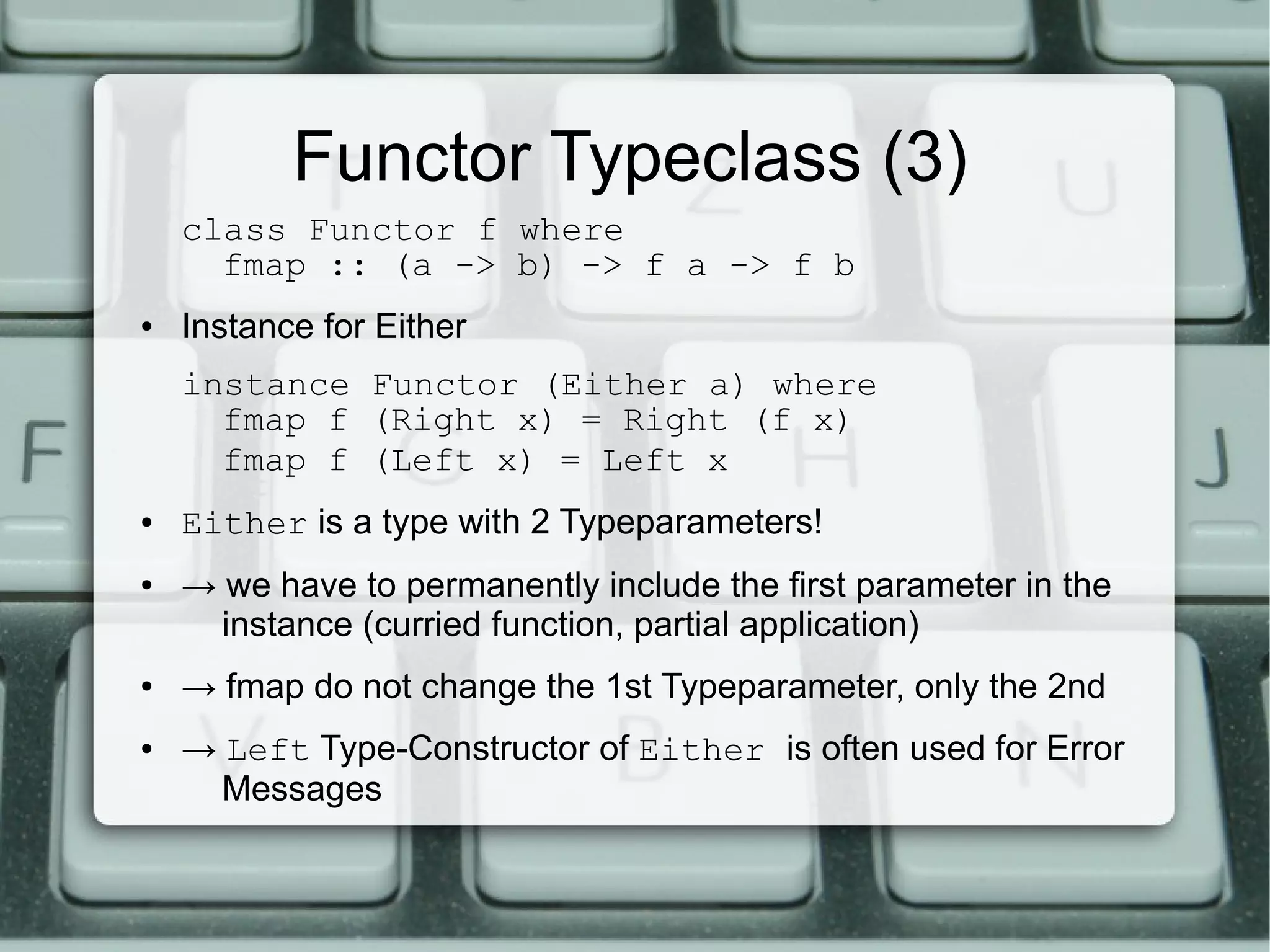
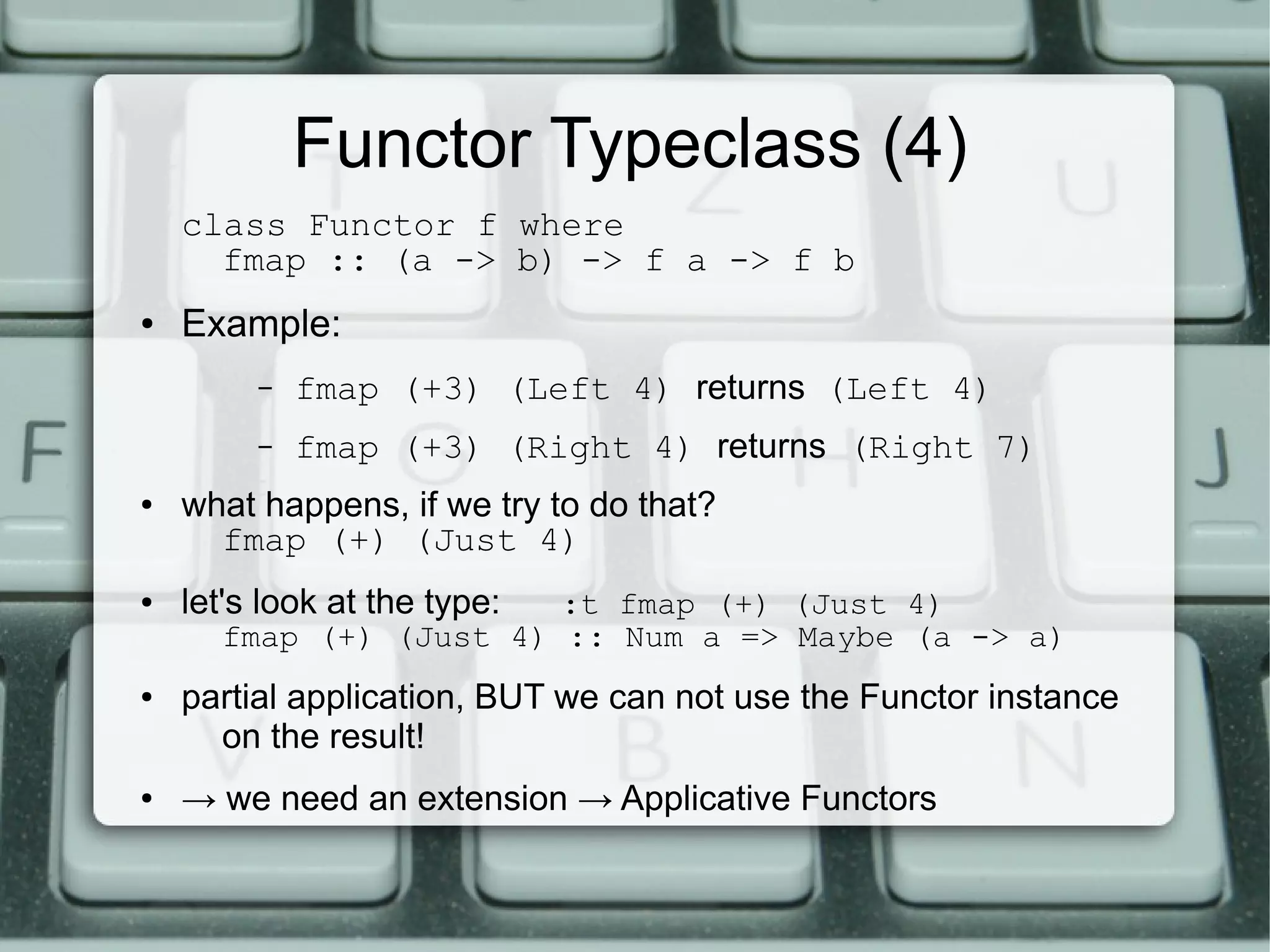
![Sources [1] Haskell-Tutorial: Learn you a Haskell (http://learnyouahaskell.com/, 2012/03/15) [2] The Hugs User-Manual ( http://cvs.haskell.org/Hugs/pages/hugsman/index.html, 2012/03/15) [3] The Haskellwiki (http://www.haskell.org/haskellwiki, 2012/03/15)](https://image.slidesharecdn.com/08-haskellfunctions-130228215050-phpapp01/75/08-haskell-Functions-22-2048.jpg)